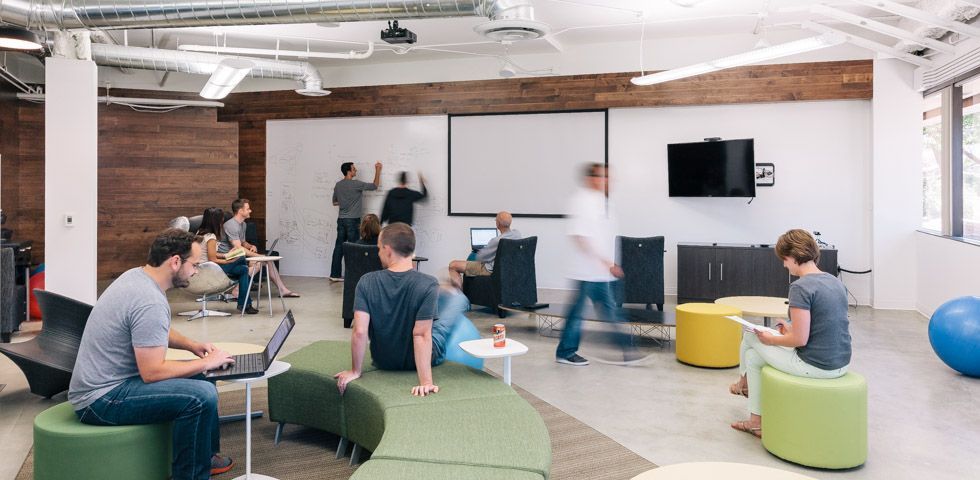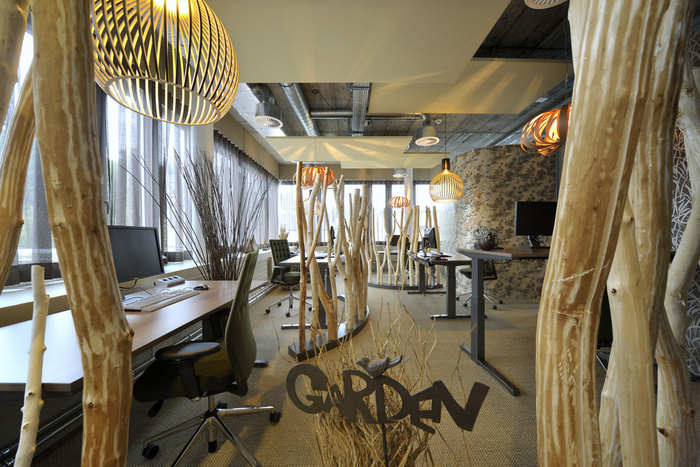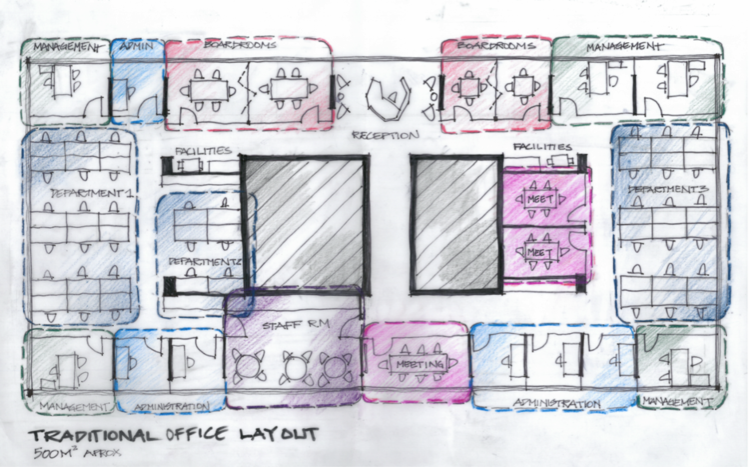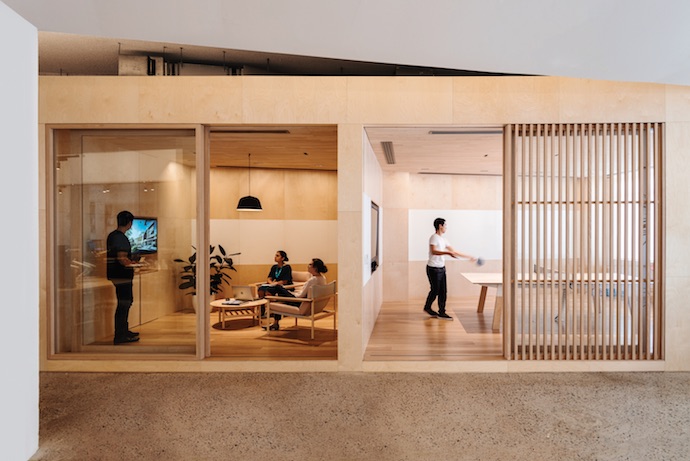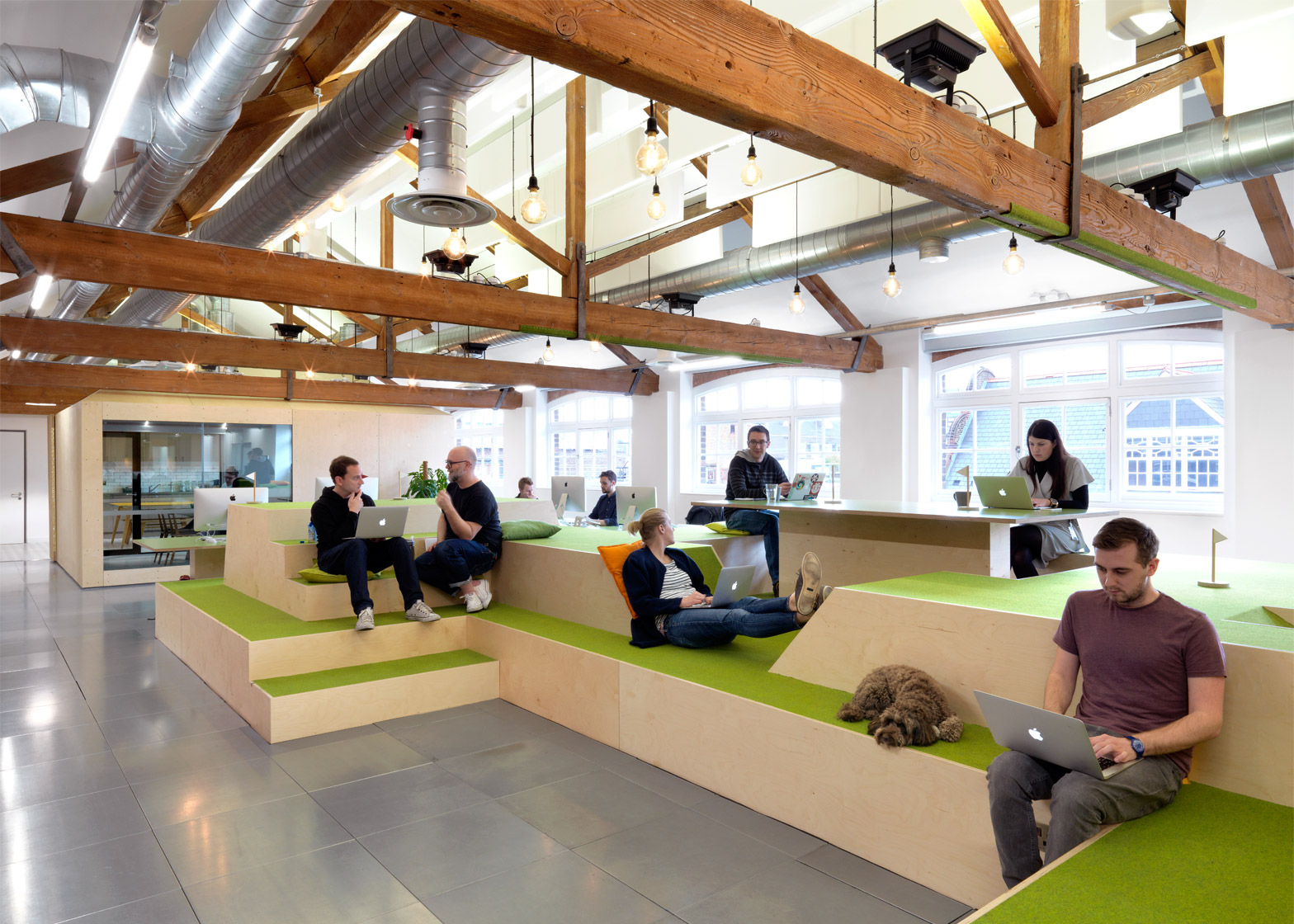Implementing activity-based workplace(ABW) design in your company
If you are like most organizations beginning to move to this new way of working, you are certainly looking to reduce your footprint and your property costs. At the same time, you may also be tasked with delivering “destination” workplaces that enable collaboration and innovation, attract talent, boost productivity and improve employee experience.
When companies begin to move toward agile environments and activity-based workplace design, there is often a misconception that you can simply remove 20 percent of the desks from each department. If your goal was only to reduce costs, that might be an acceptable strategy. But given the need to improve the quality of the workplace and employee experience, you need a better way to create work spaces that meet the needs of your teams.
Revolutionary impact
The idea behind ABW is to allow employees to move appropriately between different workstations and zones designed for specific tasks and activities.
Depending on a specific work assignment, employees should be able to choose from various workstations – e.g. work spaces for tasks that require calm and concentration, or creatively-designed collaborative areas that appeal to free brainstorming.
Interior experts emphasize the importance that design and layout of individual workstations encourage and motivate employees to move and circulate by following their current tasks.
Therefore, the design of work zones should match each other so that employees do not get attempted to favor and stay in one zone longer than necessary. Also, infrastructures and technologies must work so that employees can quickly move from one work zone to another and maintain the same levels of work quality.
When activity-based work is successful, studies show that it might have a revolutionary impact on productivity, work quality, ethics, teamwork and collaboration.
Traditional Workplace LAYOUT vs Activity Based Workplace LAYOUT
Examples of spaces in activity based office design include:
Focus rooms
Flexible conference rooms
Multi-media rooms
Quiet zones
Stand-up workstations
Open lounge cafe areas
Think-Tanks
Think-Tanks’.
These are sound proofed, somewhat smallish rooms with semi-casual seating; make sure you provide ample surfaces to be used for note taking and demonstrations.
Stairs
Traditionally, stairs are nothing more than escape exits in the corners of buildings. But in modern office design, stairs serve as another hub for social interaction and collaboration. Front and center, often making an appearance as early as the lobby or smack dab in the middle of the office, stairs connect people from all departments and support activity-based working.
Pods
If the top open office complaints are distraction and lack of privacy, why not provide employees with a small, self-contained, soundproofed space designed for concentration. Pods are perfect for heads-down work, calls, virtual meetings, and solo productivity.
Concrete needs
“One of the basic conditions for success with its activity-based office environment is that the company is dedicated to and definitely ready for this way of working. And that’s not always the case,
“The secret behind successful ABW is to avoid standard concepts and solutions. The perfect office environment should always base on the specific needs of your employees only.
“The solution is definitely not to press your company and employees into a completed concept, but to take measures of the company’s different ways of working and your individual needs.
The Activity-Based Advantage
More than ever, businesses are prioritizing the flexibility and adaptability offered by an activity-based work environment. Because nobody is attached to a fixed desk, ABW provides room for growth to be sure you’re prepared for:
Evolving job descriptions, tasks, and departments
Changing work schedules
Team members working remotely
Rapidly changing technology needs and implementation
Market demands for innovation and collaboration
Easy to change
The main conclusion was that the more often an employee changes workstation or zone, the more effective the office worker seems to perform, act and produce professionally.
The message to companies that plan to set up activity-based working environments is: Make it easy and simple for your employees to change workstation and zone and minimize the time they have to look for a next unoccupied station/zone – or it might influence negatively on their performance and productivity rates.
Take The Next Step
Because Dreamspace handles every step of the process in house, our solutions are optimized to save your money while delivering modern designs that prepare your business for tomorrow. We prioritize transparency and clarity throughout the decision-making process to guarantee that your vision for your office becomes a reality.


